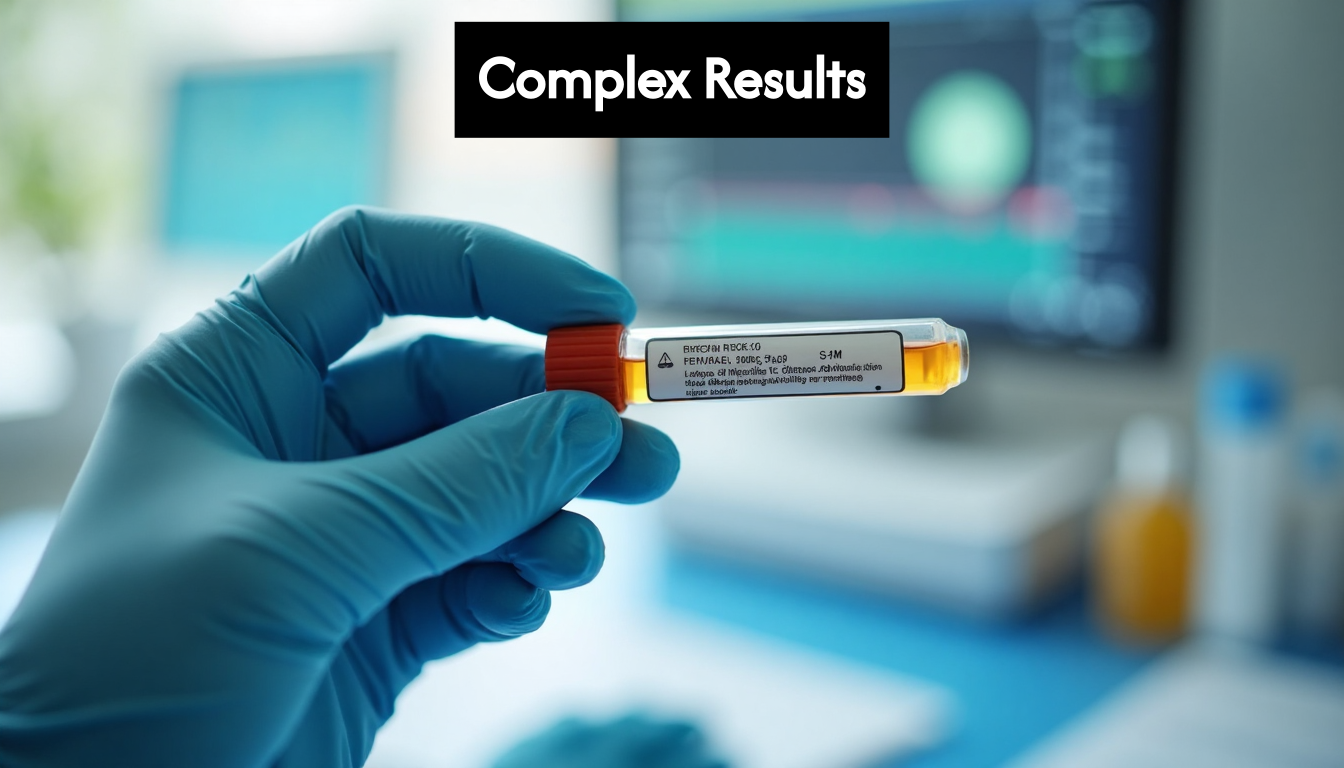Sperm function tests are changing the way men understand their fertility, going far beyond just counting cells. Here is what might surprise you. Around 50% of infertility cases actually involve male factors. Forget the tired myths about a simple sperm count being enough. Modern testing now reveals details like DNA integrity and hidden immunological challenges that could make or break the dream of starting a family. The real story is in what those numbers and results mean for your future—and how just one overlooked detail could shift everything.
Table of Contents
- What Sperm Function Tests Reveal About Fertility
- How Sperm Function Tests Confirm Vasectomy Success
- Types Of Sperm Function Tests And What They Measure
- Interpreting Your Sperm Test Results: What To Expect
Quick Summary
| Takeaway | Explanation |
|---|---|
| Sperm Function Tests Provide In-Depth Insights | These tests offer critical evaluations of sperm quality beyond mere quantity, including DNA integrity and functionality, which are essential for understanding male fertility. |
| Vasectomy Success Requires Specific Analysis | A thorough sperm analysis is crucial to confirm the effectiveness of a vasectomy, with complete absence of motile sperm being a primary indicator of success. |
| Professional Guidance is Essential for Result Interpretation | Navigating and understanding test results requires expert interpretation, as context such as age and health greatly influence fertility insights and next steps. |
| Advanced Testing Techniques Enhance Understanding | Specialized tests, such as DNA fragmentation assessments and antisperm antibody screenings, provide deeper insights into male reproductive health challenges and fertility potential. |
| Practical Steps for Addressing Fertility Issues | If test results indicate potential fertility problems, proactive measures like lifestyle changes or consulting a specialist can significantly improve reproductive health outcomes. |
What Sperm Function Tests Reveal About Fertility
Sperm function tests provide a comprehensive window into male reproductive health, offering far more than simple numerical measurements. These advanced diagnostic tools decode the complex capabilities of sperm, revealing critical insights that go beyond traditional semen analysis.

The Hidden Story of Male Fertility
Male fertility is not just about quantity but quality. Research indicates that normal sperm parameters include at least 15 million sperm per milliliter, with 32% motility and 4% normal morphological forms. However, these basic metrics only scratch the surface of reproductive potential.
Advanced sperm function tests dig deeper, examining DNA integrity and functional capabilities that standard analyses might miss. Studies show that approximately 50% of infertility cases involve male factors, making comprehensive testing crucial for understanding reproductive challenges.
Beyond Basic Numbers: Complex Fertility Indicators
Certain specialized tests can uncover nuanced fertility challenges. For instance, antisperm antibody screenings reveal immunological factors that might prevent successful conception. Research demonstrates that these antibodies are present in 2.6% to 6.6% of male infertility cases, potentially blocking sperm mobility or preventing fertilization.
DNA fragmentation assessments represent another critical evaluation. These tests measure the structural integrity of genetic material within sperm, identifying potential genetic disruptions that could impact embryo development and pregnancy success. High DNA fragmentation rates can signal reduced fertility potential, even when standard semen parameters appear normal.
Interpreting Complex Results

Understanding sperm function test results requires professional interpretation. While numbers and percentages provide valuable data, context is key. Factors like age, overall health, lifestyle, and previous reproductive history all play significant roles in comprehending test outcomes.
For individuals seeking comprehensive fertility insights, professional guidance helps translate complex medical data into actionable information. Each test result offers a unique glimpse into reproductive potential, empowering individuals to make informed decisions about family planning and potential interventions.
Sperm function tests represent more than medical procedures—they are sophisticated diagnostic tools that unveil the intricate world of male reproductive health, offering hope and clarity in the complex journey of fertility.
How Sperm Function Tests Confirm Vasectomy Success
Vasectomy success hinges on a precise and thorough evaluation of semen composition, making sperm function tests the gold standard for confirming male sterilization. These tests go beyond simple visual inspection, providing a scientifically rigorous method to verify the procedure’s effectiveness.
The Critical Window of Post-Vasectomy Testing
Research from the American Urological Association highlights the importance of timing in post-vasectomy semen analysis. Typically, men should wait approximately three months after the procedure before undergoing comprehensive testing. This waiting period allows the reproductive tract to clear remaining sperm, ensuring an accurate assessment of the vasectomy’s success.
Initial studies reveal compelling statistics about post-vasectomy outcomes. In a comprehensive analysis of 4,827 men, 58.2% were found to be completely azoospermic (no sperm present), while 28.3% demonstrated rare nonmotile sperm—both considered indicators of a successful vasectomy. These findings underscore the precision required in evaluating male sterilization.
Defining Vasectomy Success Through Sperm Analysis
Successful vasectomy confirmation requires a nuanced understanding of sperm parameters. Clinical guidelines from medical research establish clear criteria for determining procedural effectiveness. The primary indicators include:
- Complete absence of sperm (azoospermia)
- Presence of only rare, nonmotile sperm
- Zero evidence of motile sperm in the semen sample
Motile sperm remains the critical red flag. Its presence suggests the vasectomy has not successfully prevented potential fertility. Urological experts emphasize that only samples showing complete absence or rare nonmotile sperm can be considered definitively successful.
Navigating Post-Vasectomy Confirmation
Confirmation is more than a simple test—it’s a comprehensive process of verification. Men should carefully review their vasectomy test results and consult with healthcare professionals to ensure complete understanding. Continuing alternative contraception methods is recommended until a clear negative result is confirmed.
Sperm function tests provide more than medical data—they offer peace of mind. By precisely mapping the landscape of post-vasectomy reproductive status, these tests empower men with definitive knowledge about their fertility trajectory. The detailed analysis transforms a surgical procedure into a verified reproductive choice, giving individuals confidence in their family planning decisions.
Ultimately, sperm function tests represent the most reliable method for confirming vasectomy success, combining scientific precision with personal reassurance.
Types of Sperm Function Tests and What They Measure
Sperm function tests represent a sophisticated array of diagnostic tools designed to unravel the complex world of male reproductive health. Far beyond simple counting, these tests decode the intricate capabilities and potential challenges within sperm cells, providing unprecedented insights into fertility potential.
Foundational Semen Analysis: The First Line of Evaluation
Research from medical diagnostics reveals that standard semen analysis remains the cornerstone of sperm function assessment. This fundamental test measures critical parameters including:
- Sperm count (total number of sperm)
- Sperm motility (percentage of moving sperm)
- Sperm morphology (shape and structural characteristics)
- Semen volume and pH
While comprehensive, traditional semen analysis provides only a surface-level understanding. Advanced diagnostic techniques have emerged to probe deeper into sperm functionality and potential reproductive challenges.
Advanced Diagnostic Techniques
Cutting-edge sperm function tests offer more nuanced insights. The Hypo-Osmotic Swelling (HOS) Test assesses sperm membrane integrity, a critical factor in determining sperm viability. This test evaluates how sperm respond to osmotic pressure, revealing membrane functionality that traditional analyses might miss.
DNA fragmentation testing represents another sophisticated diagnostic approach. Researchers have developed novel techniques to identify intact functional sperm, particularly valuable for men experiencing nonobstructive azoospermia. This test measures the structural integrity of genetic material, potentially predicting fertility potential and identifying potential reproductive challenges.
Specialized Sperm Function Assessments
Beyond standard measurements, specialized tests provide unprecedented insights. Antisperm antibody screenings can detect immunological factors that might impede fertilization. Functional tests like the Sperm Penetration Assay evaluate the ability of sperm to successfully interact with and potentially fertilize an egg.
For individuals seeking comprehensive fertility insights, understanding these advanced diagnostic tools is crucial. Each test offers a unique perspective, transforming our understanding of male reproductive potential from a simple numbers game to a complex, nuanced evaluation.
Sperm function tests are more than medical procedures—they are sophisticated diagnostic tools that unlock the intricate world of male reproductive health, offering hope and clarity in the complex journey of fertility and reproductive potential.
Interpreting Your Sperm Test Results: What to Expect
Sperm test results can feel like deciphering a complex scientific code, but understanding these results is crucial for gaining insights into male reproductive health. The process goes beyond simple numbers, offering a comprehensive view of fertility potential and overall reproductive wellness.
Understanding Basic Parameters
Research from fertility specialists reveals that a normal semen analysis evaluates several key parameters. These critical measurements include:
- Semen volume (normal range 1.5–6 mL)
- Sperm concentration (at least 39 million per ejaculation)
- Sperm motility (total motility around 40%)
- Sperm morphology (shape and structural characteristics)
Fertility experts emphasize that sperm motility is particularly critical. Healthy sperm typically show at least 40% total motility, with 32% progressive motility necessary for successful egg fertilization. Low motility can significantly reduce conception chances, making this parameter a crucial indicator of reproductive potential.
Navigating Complexity: Beyond Simple Numbers
Medical research highlights that interpreting semen analysis results requires a holistic approach. A single abnormal result does not automatically indicate infertility. Underlying factors such as hormonal imbalances, blockages, or reproductive tract issues can influence test outcomes.
Contextual interpretation is key. Factors like age, overall health, lifestyle, and previous reproductive history play significant roles in understanding test results. For those seeking deeper insights, professional medical guidance can help translate complex data into actionable information.
Next Steps and Professional Guidance
Receiving sperm test results can evoke a range of emotions. Some men might feel anxious, while others approach the results with clinical detachment. Regardless of the initial reaction, understanding the results is a proactive step toward reproductive health.
If results indicate potential challenges, don’t panic. Many fertility issues can be addressed through lifestyle modifications, medical interventions, or specialized treatments. Consulting with a reproductive health specialist can provide personalized insights and potential strategies for addressing any identified concerns.
Sperm function tests are more than medical diagnostics—they are powerful tools that empower individuals with knowledge about their reproductive health. By understanding these results, men can make informed decisions about family planning, potential treatments, and overall wellness.
Frequently Asked Questions
What are sperm function tests and why are they important?
Sperm function tests assess various aspects of sperm quality beyond mere count, including vital factors like DNA integrity and sperm motility. These tests are crucial for understanding male fertility and identifying any potential challenges in conception.
How long after a vasectomy should I get a sperm analysis?
It’s recommended to wait approximately three months after a vasectomy before undergoing a sperm analysis. This allows enough time for any remaining sperm to clear from the reproductive tract, providing an accurate assessment of the procedure’s success.
What types of sperm function tests are available?
Common types of sperm function tests include foundational semen analysis, advanced diagnostic techniques like DNA fragmentation testing, and specialized assessments such as antisperm antibody screenings. Each test offers unique insights into male reproductive health and fertility potential.
How can I interpret my sperm test results?
Interpreting sperm test results involves understanding basic parameters such as sperm count, motility, and morphology. It’s essential to consider these results in context, factoring in age, overall health, and lifestyle. Professional medical guidance can help clarify complex data and provide actionable recommendations.





